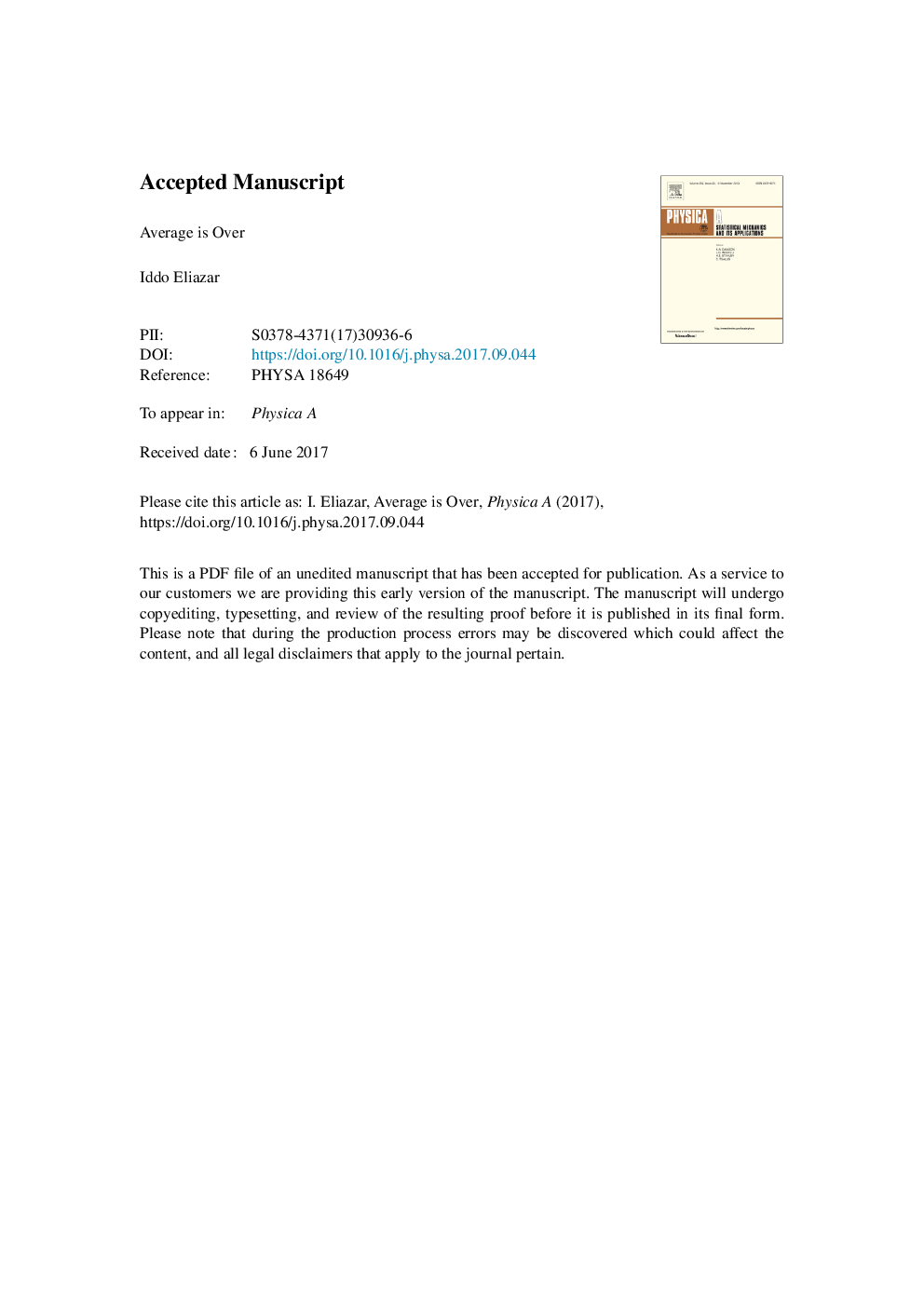| Article ID | Journal | Published Year | Pages | File Type |
|---|---|---|---|---|
| 7376215 | Physica A: Statistical Mechanics and its Applications | 2018 | 31 Pages |
Abstract
The popular perception of statistical distributions is depicted by the iconic bell curve which comprises of a massive bulk of 'middle-class' values, and two thin tails - one of small left-wing values, and one of large right-wing values. The shape of the bell curve is unimodal, and its peak represents both the mode and the mean. Thomas Friedman, the famous New York Times columnist, recently asserted that we have entered a human era in which “Average is Over” . In this paper we present mathematical models for the phenomenon that Friedman highlighted. While the models are derived via different modeling approaches, they share a common foundation. Inherent tipping points cause the models to phase-shift from a 'normal' bell-shape statistical behavior to an 'anomalous' statistical behavior: the unimodal shape changes to an unbounded monotone shape, the mode vanishes, and the mean diverges. Hence: (i) there is an explosion of small values; (ii) large values become super-large; (iii) 'middle-class' values are wiped out, leaving an infinite rift between the small and the super large values; and (iv) “Average is Over” indeed.
Related Topics
Physical Sciences and Engineering
Mathematics
Mathematical Physics
Authors
Iddo Eliazar,
